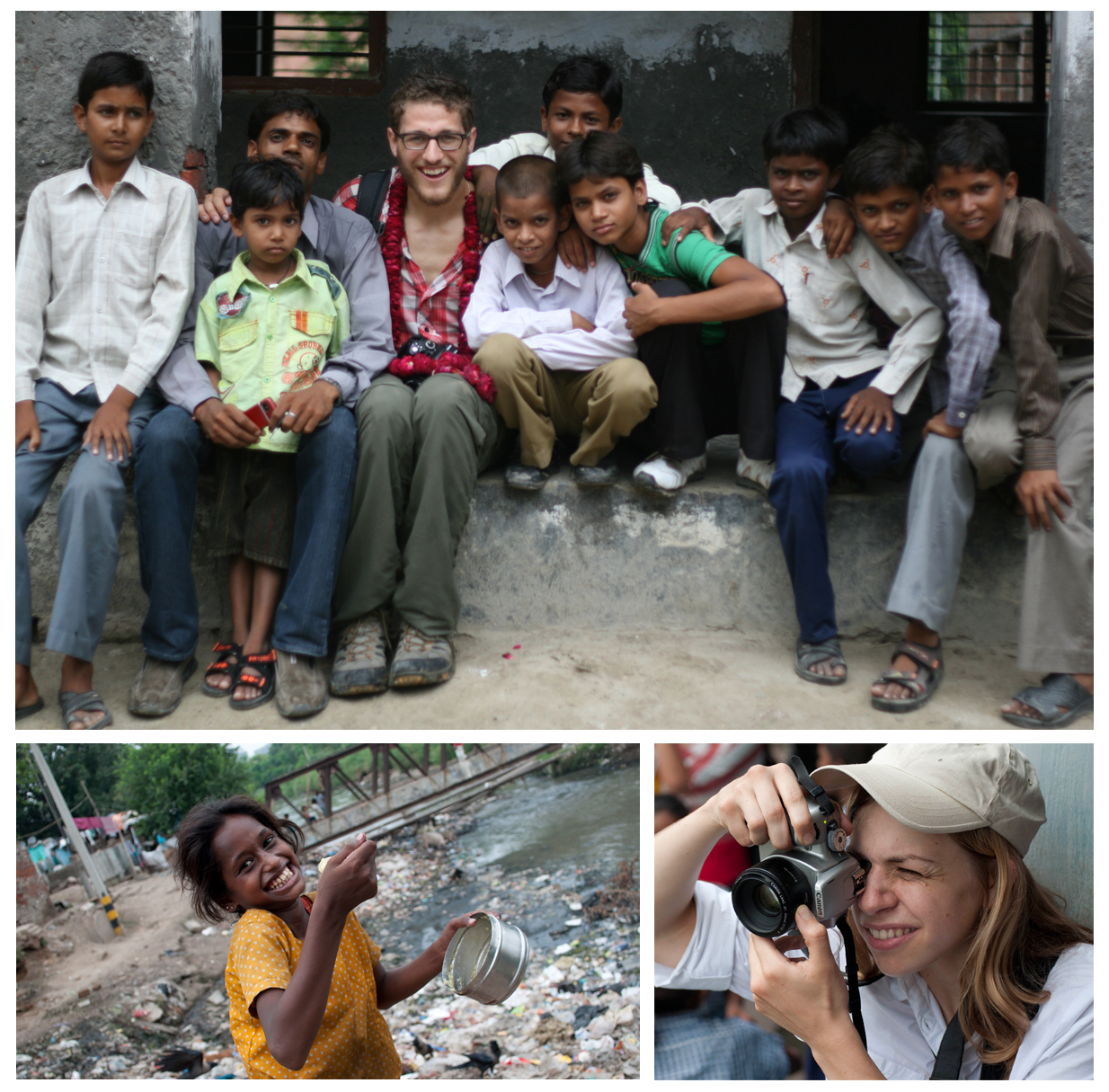
A summer study abroad experience has forever changed Maricia Guzman.
A sophomore news-editorial major, Guzman was one of 19 students who ventured to India as part of the Journalism 391 "Mobile Media to India" class. As the students and three faculty documented stories, some of the Indian youth started calling Guzman "didi" — which is Hindi for elder sister.
"I have tank skin, dark hair and brown eyes, so I did look Indian and the younger girls would call me 'didi,'" said Guzman. "It's a term of respect and endearment — as far as I'm concerned, I will always be a didi."
Armed with cameras, laptops, microphones and other mobile journalist tools, the UNL group worked for two weeks gathering socioeconomic stories in the south Asian nation.
“You can read all you want about another country, but until you actually experience it can you get a real feel for what it is like,” said Bruce Mitchell, lecturer of advertising and one of the faculty members who accompanied students on the two-week adventure. “The experiences of interviewing those people, having to work out the logistics of doing an interview without knowing the language and just navigating the country is invaluable and cannot be obtained in a classroom setting.”
Mitchell was one of the three faculty to accompany students on the trip. Other faculty who participated were Scott Winter, assistant professor of journalism, and Nancy Mitchell, professor of advertising and director of general education in Undergraduate Studies.
Gary Kebbel, dean of the College of Journalism and Mass Communications, helped initiate the India trip through his ties with the International Center for Journalists. UNL partnered with World Media Academy in Delhi, India, to make the study-abroad opportunity a reality.
The actual course offering began to take shape in fall 2010 and was directed toward students who possessed a passion for socioeconomic investigative journalism.
“The class was actually billed as a social justice mobile media project, which included gender, poverty and other sociological and cultural issues,” said Winter. “That idea helped us get students who wanted to go for all the right reasons when it comes to media education.”
UNL students collaborated with Indian students, international journalists and non-government organizations to pinpoint and complete stories.
“They will never forget their India trip and it will influence their writing, how they approach future work and dealing with people in general,” Bruce Mitchell said. “Having to create journalism out of their safety zone is an experience that will stay with them for a while.”
The combined professional experience of the faculty chaperones offered students a traveling encyclopedia of journalistic knowledge, while still leaving room for the revelry of being a rookie reporter in foreign territory.
“All three of them are excellent journalists,” Guzman said. “They knew when to let us go test the waters by ourselves, but were also there for us if we ever needed direction or help creating a reporting opportunity.”
Students maintained individual blogs on the popular social media site Tumblr as a means of both journalistic and personal reflection during their time abroad.
These blogs recount jarring interactions with Indian locals and serve as altars of self-awareness, as some of the students said they feel notably affected by their trip.
“India is a place I want to go back to whenever I get the chance, and I want to take more and more people with me each time,” said Matthew Masin, a sophomore broadcasting major. “I’ve really reevaluated my life and how lucky I am to be in school and have a home among other petty things that I used to take for granted.”
For Hailey Konnath, a sophomore news-editorial and international studies major, India has played an indelible role in shaping her ambitions and career objectives.
“India will affect everything I do from here on out,” Konnath said. “It gave me confidence in reporting, validated my desire to travel extensively and, most of all, gave me clarity.”
Guzman recalled the moment she and junior broadcasting major Camila Orti visited a rural Indian village to meet with groups of women to talk about their personal battles.
“Understand that India is a very patriarchal society and to have the opportunity for outsiders like Camila and I to sit in a circle with women, sipping chai tea, eating cookies and listening to them talk candidly about issues important to them is incredibly rare,” Guzman said. “This kind of gender inequality is something that the women want to change but they are hindered severely by tradition.”
Mitchell said that the journalism college’s efforts to explore new, and sometimes remote, parts of the world are reflective of the university’s landscape as a whole, which has become more globalized over the past decade.
“UNL is becoming a more global community all of the time,” he said. “We all have an investment in dealing with and learning about other cultures.”
In recent years, the college has sent student journalists to Bolivia, Cuba, England, France, Germany, Japan, Kazakhstan, Kosovo, Mexico, South Africa and Sri Lanka.
“These trips are what will set UNL journalists apart from everyone else,” Guzman said. “These trips will take great journalists and make them excellent.”
More information on the Digital Media India project is available at http://digitalmediaindia.org/.
- Mekita Rivas, University Communications